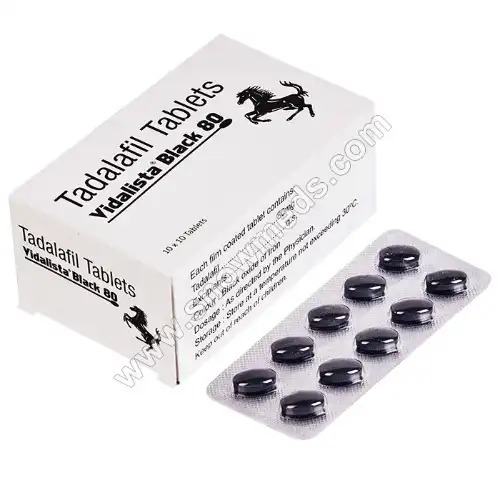Food preservation is an age-old practice that allows us to enjoy nature’s bounty year-round. Among various methods, using a food-dryer has gained popularity for its simplicity and effectiveness. Picture this: biting into a sun-dried tomato or snacking on crispy apple chips—food-dryers make these delightful treats possible. But how do they work their magic? In this post, we dive deep into the fascinating world of food dehydration. Whether you’re looking to create healthy snacks or preserve seasonal produce, understanding the science behind food dryer can elevate your culinary game. Join us as we explore everything from choosing the right model for your kitchen to innovative uses beyond drying food!
The Ultimate Guide to Choosing the Best Food-dryer for Your Kitchen
Choosing the best food-dryer for your kitchen can feel overwhelming, but it doesn’t have to be. Start by considering the size. Think about how much space you have and how much food you plan to dehydrate. Next, look at capacity. Some models are compact while others can handle larger batches. A higher capacity will save time if you’re prepping for a family or your business.
Temperature settings are crucial too. A range of temperatures allows for better control over different foods. Look for adjustable settings that cater to fruits, vegetables, and meats. Consider ease of use and cleaning features. Removable trays make cleanup easier after drying sessions. Check user reviews; they often reveal real experiences with specific models. By focusing on these factors, you’ll find a food-dryer that perfectly suits your culinary needs and lifestyle.
How to Use a Food-dryer: A Step-by-Step Tutorial?
When using a food dehydrator, you’ll find that the process is user-friendly and highly rewarding. Gather ingredients such as fresh fruits, vegetables, herbs, and meats to get started. It’s crucial to ensure that all the ingredients are thoroughly washed to remove dirt or pesticides. For fruits like apples or pears, consider slicing them thinly to ensure they dry evenly. Additionally, pre-treating certain foods, such as a quick dip in lemon juice for apples, can enhance their flavor and preserve their vibrant color.
Next, carefully set up your food dehydrator according to the manufacturer’s instructions. It’s essential to arrange the prepared pieces on the trays without overlapping to guarantee proper airflow during drying. When selecting the appropriate temperature for your ingredients, remember that fruits generally require lower temperatures than meats. Once you’ve set the machine and selected the temperature, periodically check for doneness. Remember, most items will take several hours to dehydrate, so patience is key to achieving perfectly dehydrated snacks.
Top Benefits of Using a Commercial Dehydrator in Your Business
A commercial dehydrator can elevate your business in numerous ways.
Extend Shelf Life of Products
A commercial-dehydrator can remove moisture from food, making it last longer without spoiling. This is especially beneficial for businesses that sell dried fruits, herbs, or other perishable items.
Cost Savings
By preserving food through dehydration, businesses can save money on buying fresh produce and other ingredients frequently. Dehydrated products also take up less space and are easier to transport, leading to lower shipping costs.
Versatility
A commercial-dehydrator can be used for various purposes beyond just drying fruits and vegetables. It can also be used to make jerky, fruit leather, and even dried flowers for decorative purposes.
Consistency of Product
Using a commercial-dehydrator ensures that your products’ moisture content is consistent every time. This leads to a more reliable end product and satisfied customers.
Health Benefits
Dehydrated foods retain most nutrients, making them a healthier alternative to processed snacks. This can appeal to health-conscious customers and attract new business.
How a Food-dryer Can Save You Money and Reduce Food Waste?
Investing in a food dehydrator can significantly impact your finances and the environment. Preserving fruits, vegetables, and herbs at home reduces the frequency of buying costly dried goods from stores. Just imagine all the fresh produce that often goes bad in your fridge. A food dehydrator empowers you to salvage these items before they spoil. You can transform overripe bananas into delicious chips or excess tomatoes into flavorful sun-dried delicacies.
Furthermore, this approach offers enhanced flexibility in meal planning. When you dehydrate seasonal foods, they maintain their quality for a longer period and can be utilized when shopping is impossible. Ultimately, reducing food waste directly translates into tangible grocery bills savings. It’s incredibly rewarding to know that every piece of produce is used well instead of discarded. By making a modest investment in a food dehydrator, you benefit your wallet by cutting down on food waste and contributing positively to the environment.
The Science behind Food Preservation: How a Food-dryer Works
Food dehydration is a captivating and scientific method essential for retaining the maximum amount of nutrients. When using a food-dryer, controlled heat and airflow are employed to effectively remove moisture from a variety of foods, such as fruits, vegetables, and herbs. As the food dries out, the growth of microbes like bacteria, yeast, and molds is significantly reduced.
This reduction in water content inhibits the activity of these spoilage agents, thus extending the shelf life of the produce. Moreover, applying heat not only aids in extracting moisture but also plays a vital role in preserving essential vitamins and minerals. Unlike other preservation methods such as canning or freezing, which may alter the texture or flavor of the food, dehydration maintains the original taste while enhancing its concentration.
The role of air circulation should not be overlooked either. It is instrumental in ensuring uniform drying by preventing hot spots that could lead to uneven results. Striking a delicate balance between these factors allows for optimal nutrient retention and an extended shelf life. It’s no wonder that many individuals opt for food-dryers as their preferred method for effectively preserving nature’s bountiful produce.
How to Maintain and Care for Commercial Dehydrators Australia?
Maintaining commercial dehydrators Australia is vital for ensuring their longevity and efficient performance. To achieve this, it is important to follow a comprehensive care routine.
- Begin by cleaning the trays after each use using a mild soap solution to remove any residue without causing damage. This practice will keep the trays in good condition and prevent cross-contamination of flavors between different batches of food.
- Regularly inspect the heating element to ensure that it is functioning properly. Any signs of irregularities may indicate a need for professional servicing, which is essential for the dehydrator’s safe and efficient operation. Additionally, keeping the vents clear of debris is crucial in preventing overheating and ensuring optimal performance and energy efficiency. This simple action can go a long way in maintaining the dehydrator’s effectiveness.
- It is also important to pay close attention to the seals on the dehydrator’s doors or lids. Gaps in the seals can lead to inconsistent drying results, so it’s essential to check them frequently and replace any worn-out seals promptly. This proactive approach will not only save time but also improve the overall quality of the drying process.
- Finally, when the dehydrator is not in use, it should be stored in a cool, dry place to protect it from moisture, which could otherwise lead to the growth of mold or cause components to rust over time. Adhering to these detailed maintenance practices will help ensure that your commercial-dehydrator remains in top working condition for the long term.
Innovative Ways to Use Your Food-dryer beyond Just Drying Food
A food dehydrator is a versatile and valuable tool for your kitchen. Its uses extend beyond drying fruits and vegetables; you can also create homemade herb seasonings. You can concentrate the flavors of your favorite fresh herbs by dehydrating them, adding depth to any dish. Additionally, you can experiment with making unique snacks like yogurt drops. Simply spread yogurt on the dehydrator trays, let it dry, and enjoy the delight of enjoying these tangy, chewy bites whenever you desire a refreshing treat.
If you’re a jerky fan, why not experiment with making your own? You can use lean meats or explore plant-based proteins to tailor savory jerky flavors to your taste preferences. Another creative idea is crafting potpourri. You can dehydrate flowers and citrus peels to create an aromatic blend that naturally freshens up any room in your home. You might also consider using the food dehydrator to create wholesome snacks for your pets. By dehydrating fruits or veggies they love, you can provide natural and delicious treats. This way, you’re preserving food and enhancing the experiences around your home for both yourself and your furry friends.
Food-dryer Safety Tips: What You Need to Know
When using a food dehydrator, it’s crucial to prioritize safety. Start by ensuring that the appliance is on a stable surface, away from any heat sources or flammable items that could pose a risk. Regularly inspect the power cord for any wear or damage, as a frayed cord can lead to serious hazards such as electrical shock or fire. Before dehydrating, washing fruits and vegetables thoroughly to remove any pesticides and dirt that could contaminate your snacks.
Additionally, keeping children and pets at a safe distance while operating the machine is essential, as some parts may become hot during the process. Caution should always be exercised. Always follow the manufacturer’s guidelines regarding temperature settings and drying times to ensure the safe and proper use of the dehydrator. This enhances the quality of your dried foods and contributes to overall safety. After the drying process, it’s advisable to store your dried produce in airtight containers in a cool, dark place to prevent spoilage or contamination. This will help maintain the food’s quality and safety for consumption.
Conclusion
Embracing the art of food dehydration opens a world of possibilities. You can transform fresh produce into nutrient-rich snacks and meals with a well-chosen food dryer. This technique preserves flavors and ensures that essential vitamins remain intact. Exploring various uses for your dehydrator enhances creativity in the kitchen. From fruit leathers to homemade spice blends, there’s no limit to what can be achieved. Moreover, adopting this practice significantly reduces waste while saving money on groceries. It’s an eco-friendly approach that benefits both your wallet and the planet.
FAQs
What types of foods can I dehydrate with a food-dryer?
You can dehydrate various foods including fruits, vegetables, herbs, and even meats. Think apples, bananas, carrots, tomatoes—almost anything with moisture can be dehydrated.
How long does it take to dry food using a food-dryer?
The drying time varies depending on the food’s type and thickness. Typically, fruit takes between 6 and 12 hours, while vegetables might require 4 to 10 hours. Always refer to specific guidelines for optimal results.
Is commercial dehydrator worth the investment?
Investing in a commercial dehydrator is beneficial if you’re serious about preserving large quantities of food or running a business that requires consistent quality and efficiency in drying processes. They offer larger capacities and often come equipped with advanced features not found in home models.
With these insights into how easy and effective a food-dryer can be for personal and professional applications, you’ll likely find yourself more inclined to start your dehydration journey today!




